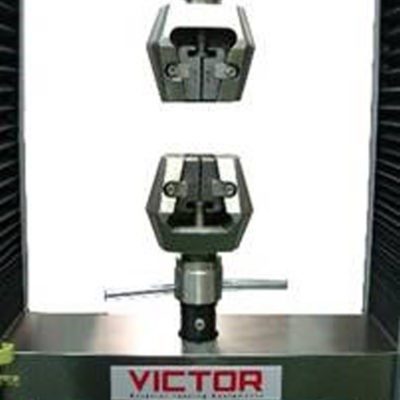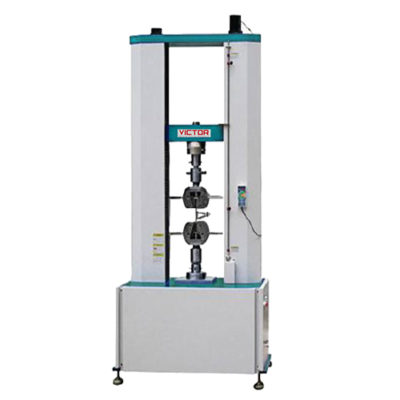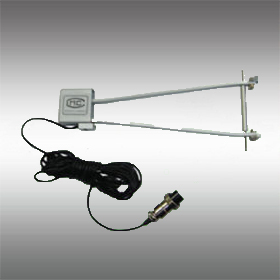ASTM is an international standards organization that is located in the United States of America. The purpose it was introduced to the industry is to publish technical standard agreements for various materials, product, systems and others. Among the ASTM standards that are often use in the industry is ASTM A1061.
ASTM A1061 Test Standard
Description For ASTM A1061
ASTM A1061 is a testing standard that describes the mechanical testing procedure for testing multi-wire metal strand. Strands are made out of two or more steel wires wound together in a helical form. The mechanical properties of the strand is determine by a test in which fracture of the specimen occurs in the free span between the grips of the testing machine. To achieve the highest level of accuracy in the measurement of material properties of the test specimen a uniform load must be apply to the strand. Failure to apply an even load will result in error in the test data.
Gripping the strand wire and measuring its elongation can be challenging. Wedge grips with serrated v-jaws are often used for A1061 multi-wire steel strand testing. The yield strength and elongation measurements can be done using extensometers.
Specimens For ASTM A1061
- Wire metal
Grip For ASTM A1061
- Wedge grip

Wedge grips are a popular option to be use for tensile testing on metallic materials. This is because the specimen is pulled more tightly into the narrowest area of the wedge and it will be increasing the gripping pressure.
Type of UTM machine
We recommend using UTM machines with a capacity of 100kN-50kN. It depends on the strength of the materials.
- VEW 2302 Series

VEW 2302 Computer Servo Type Universal Testing Machine is a new material testing machine that combine with the electronic technology and mechanical transmission, it has accurate load speed, range of force measurement, has high accuracy and sensitivity for the load, displacement measurement and control, it also can be tested the constant-velocity loading, constant- velocity displacement. This machine is simple to operate, especially suitable for controlling quality in the production line, this series of machine is mainly apply to test the non-metallic and metallic materials which the load is less than 30ton.
Main Function:
Mainly apply to test the metallic and non-metallic materials in tension, compression, bending, shear, peel, tear or two-point extensions and others.
Can be use for materials such as rubber, plastic, wire and cable, optical fiber and cable, safe belt, leather belt composite materials, plastic profiles, waterproof membrane, steel, copper, profiles, spring steel, bearing steel, stainless steel (as well as other high-hardness steel), castings, plate, strip, non-ferrous metal wire.
Extensometer For ASTM A1061
When performing a tensile test on metallic materials it requires a high-accuracy device to measure the deformation of metallic materials. It also to determine properties at lower strain values, such as modulus or yield, and a slightly lower-accuracy device for high strain values, such as uniform elongation or total elongation. Below is a type of extensometer that can be use when performing tensile tests on metallic materials.
- Electronic extensometer

Testing Procedure
- Measure and record the specimen dimensions necessary to determine the cross sectional area at its smallest point. The original cross sectional area is use for all engineering stress calculations.
- Mark the gauge length with a center punch, scribe marks or draw with ink. The distance between the gauge marks after the specimen is broken is used to determine the percent elongation at break.
- Zero the testing machine without the specimen inserted in the grips. Install the specimen in the grips and apply an initial load of 10% of the required minimum breaking strength to the specimen.
- Attach extensometer to the specimen to measure the yield strength and elongation.
- To measure elongation, increase the load until the extensometer indicates an elongation value equal to or greater than the minimum specified applicable specification. It is not necessary to determine the total percent elongation at maximum force.
- Run the test until specimen fracture to measure the breaking strength.
Measurement
Yield Strength
- Apply an initial load of 10% of the required minimum breaking strength to the specimen, attach the extensometer and adjust it to a reading of 0.1% of gage length. Increase the load until the extensometer indicates an extension of 1%.
Elongation
- Apply initial load of 10% of the required minimum breaking strength to the specimen. Attach the extensometer and adjust it to a zero reading. Increase the load until the extensometer indicates an elongation value equal to or greater than the minimum specified in the applicable specification.
Breaking Strength
- Continue loading to determine the maximum load at which one or more wires of the strand are fractured. Record this load as the breaking strength of the strand.
